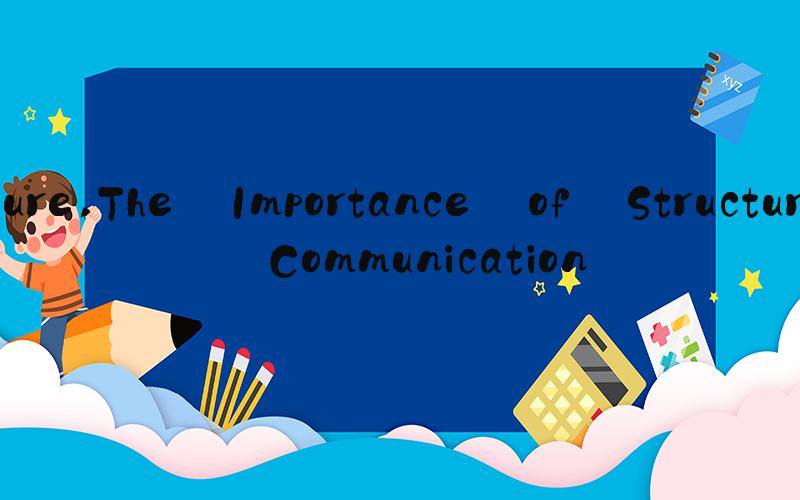AI答案
 Structure - The Key to Effective Communication
Structure - The Key to Effective CommunicationEffective communication is one of the fundamental tenets of success in personal and professional life. However, communication is comprised of various elements that must be structured in a manner to develop the desired outcomes. Structure refers to the organization and sequencing of information, words, or ideas in a manner that makes communication coherent and easy to understand. This article will delve into the importance of structure and how it impacts communication.
The Importance of Structure in CommunicationStructure plays a crucial role in the effectiveness of communication. Without structure, information can become disorganized, difficult to follow, and often confusing. Structure facilitates communication by providing a roadmap that guides the flow of ideas from one point to another, reducing the likelihood of misunderstanding or misinterpretation. Additionally, structure creates a foundation that can support the message being conveyed, thereby making it more compelling.
The Role of Structure in Written CommunicationIn written communication, structure is particularly essential. A well-structured piece of writing captures and maintains the reader's attention, allowing them to comprehend and absorb the intended message quickly. Writing using descriptive headers, paragraphs with clear themes, and properly-sequenced sentences helps to create a logical and coherent article, blog post, or report. Proper structure in writing also makes it more accessible for search engines to index, increasing its visibility to readers who may be searching for the specific topic being covered.
The Importance of Structure in Verbal CommunicationIn verbal communication, structure also plays an essential role. When giving a presentation, structure creates expectations for the audience, enabling them to follow the speaker's points effortlessly. A well-structured presentation also allows the listener to walk away with a better understanding of what was conveyed. In group discussions, structure ensures all participants have an opportunity to express their views, and all relevant topics are covered.
The Three Components of Effective Communication StructureThe three components of effective communication structure are organization, clarity, and relevance. Organization dictates how information is arranged or presented, clarity is how well it is understood, and relevance is the degree to which it is pertinent to the topic at hand. The following are some tips to consider when aiming to develop and implement an effective structure.
Developing Effective Communication StructureClearly define your message: The first step in developing an effective communication structure is to ensure that you have a clear message that you wish to convey. Develop a clear understanding of what you want to say, and how it aligns with your intent.
Identify the audience: Understand who you are communicating with and tailor your structure to meet their needs. Consider the tone and language you will use, how much background information they will require, and what their specific interests or needs are.
Organize the content: Develop a logical sequence for your message, ensuring that each point builds upon the previous one. Group related pieces of information and use clear headers and subheaders to guide the reader's eyes.
Use visuals: When presenting information, visuals such as graphs, diagrams, and charts can help make it easier to understand complex concepts. Ensure that the visuals are relevant and accurately represent the message being conveyed.
Summarize: At the end of a communication piece, summarize the critical points that have been presented, reinforcing the message, and providing clarity to the recipient.
The Benefits of Effective Communication StructureThe benefits of effective communication structure are myriad. Structured communication enables a clearer understanding of messages and increases the retention of information. It also allows for shorter and more concise communication that is presented in a manner that is easy to comprehend and follow. In professional settings, effective communication structure can lead to increased productivity, more successful outcomes, and better decision-making.
ConclusionAchieving effective communication is an ongoing process that requires a clear understanding of the intended message and the audience it is directed towards. Applying proper structure to communications can massively impact the effectiveness of messaging and produce more successful outcomes. Incorporating the practice of using structured communication into both professional and personal communications can significantly enhance both relationships and business results.
